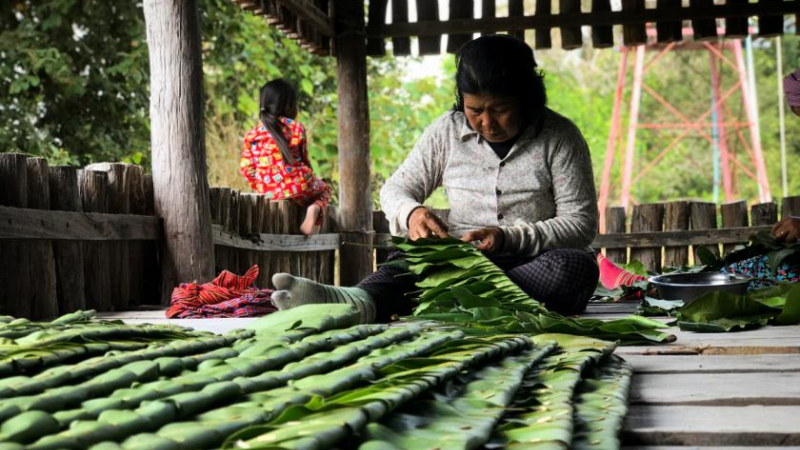A community member makes roof fronds out of leaves from the surrounding forest. (Photo: UNEP)
Locals lead adaptation efforts in drought-stricken Cambodian forests
Cambodian villagers are planting drought tolerant trees and implementing irrigation systems to cope with variable rainfall
Locally led adaptation is fighting rainfall variability and unsustainable practices across a number of community protected areas in Cambodia.
Through reforestation, the planting of drought-tolerant rice varieties, and the use of effective irrigation systems like pumps and tanks, villagers have been able to adapt and mitigate against the worst impacts of climate change and the influence of anthropogenic activity.
Cambodia sees increasingly erratic rainfall patterns which drastically affect the crops of communities: 80% of which are reliant on agriculture for their livelihoods. Illegal logging further exacerbates the problem by destabilising land and reducing its ability to regulate natural irrigation and maintain cultivable soil.
“The big trees that used to be here attracted the rain, but when they went, we found we had no water and our area was drying up,” said Yuth Thy, a local farmer.
A United Nations Environment Programme project, financed by the Adaptation Fund and executed by Cambodia’s Ministry of Environment, is fighting against these impacts and has trained thousands of people to adapt and, more importantly, lead on such efforts in the future.
“Locally led adaptation is when the community or stakeholders affected are in the driving seat when it comes to identifying their issues, being a part of the process to decide on the interventions and then playing an active role in implementing the interventions,” said Atifa Manji, programme officer at UNEP. “This is important as it builds the capacity of local groups to take action and sustain the interventions in the long run.”
Continue reading the original article.



